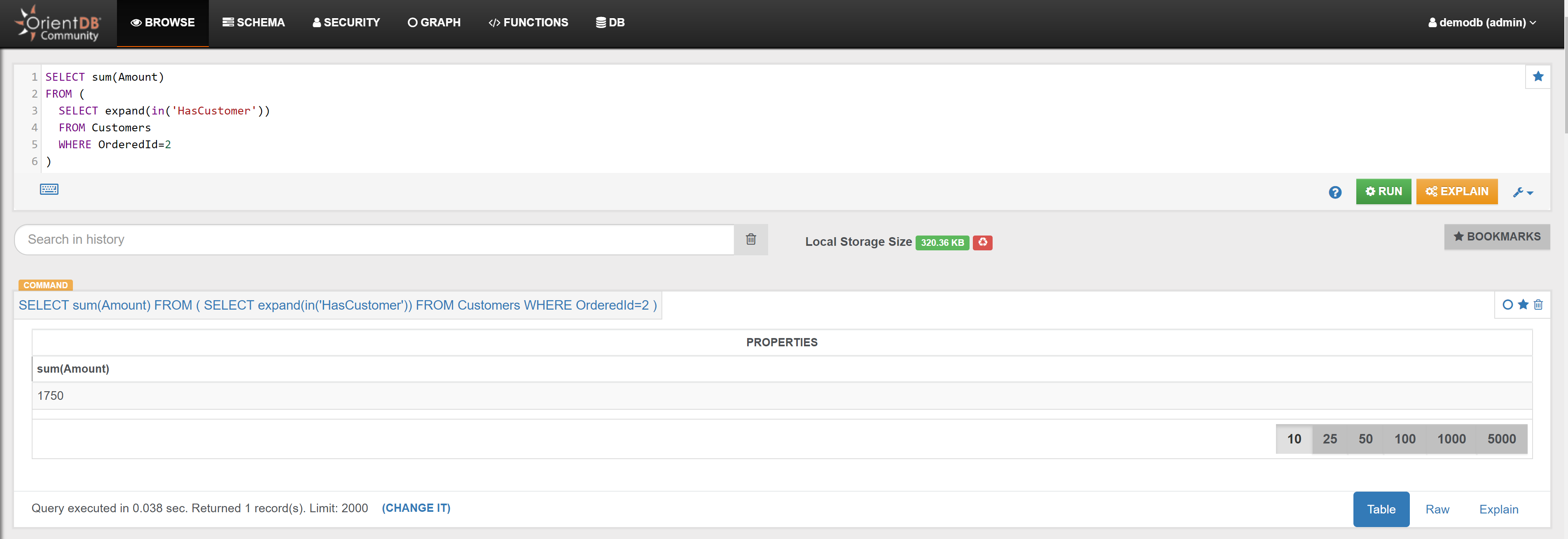Orders
Example 1
Calculate the total revenues from Orders, and the min, max and average Order amount:
SELECT
count(*) as OrdersNumber,
sum(Amount) AS TotalRevenuesFromOrders,
min(Amount) as MinAmount,
(sum(Amount)/count(*)) as AverageAmount,
max(Amount) as MaxAmount
FROM Orders
In the Browse Tab of Studio, using the query above, this is the visualized result:
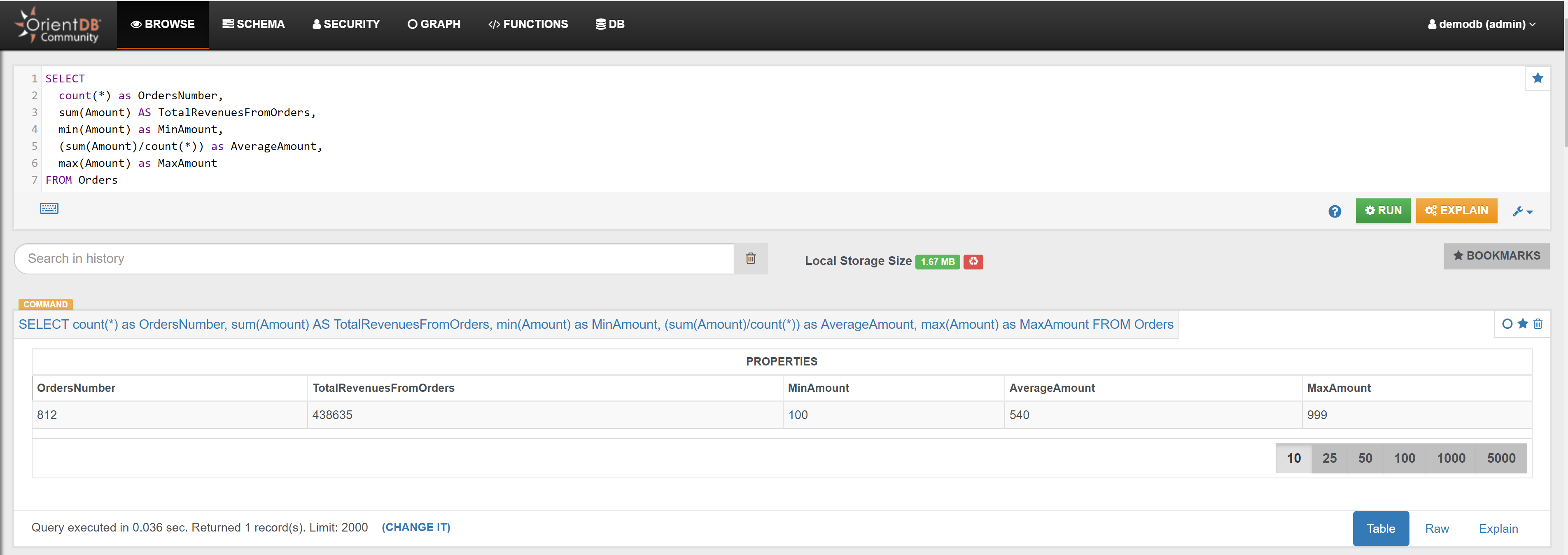
Example 2
Find the year of the Orders, and how many Orders have been placed in the same year:
SELECT
count(*) as OrdersCount,
OrderDate.format('yyyy') AS OrderYear
FROM Orders
GROUP BY OrderYear
ORDER BY OrdersCount DESC
In the Browse Tab of Studio, using the query above, this is the visualized result:
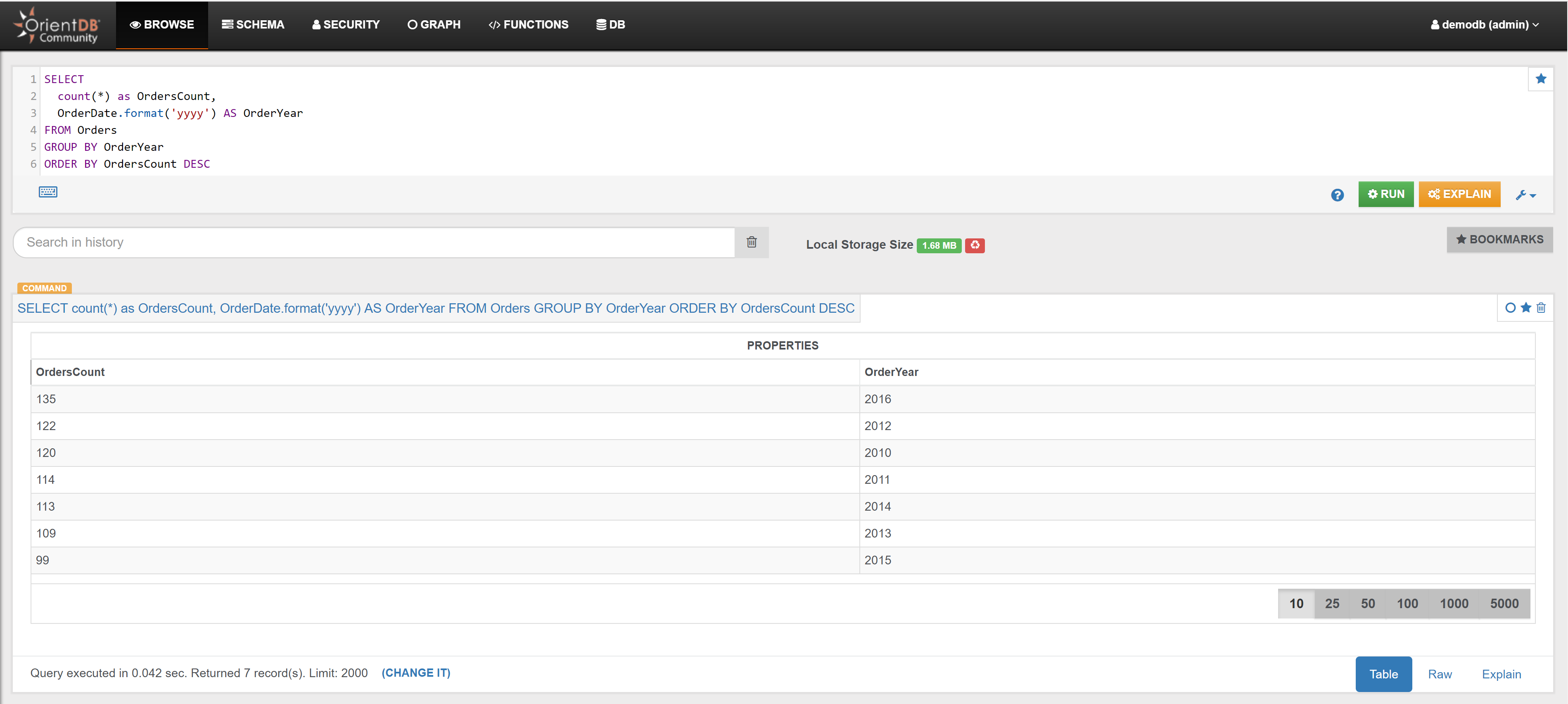
Example 3
Find the 3 Customers who placed most Orders:
SELECT
OrderedId as CustomerId,
in("HasCustomer").size() AS NumberOfOrders
FROM Customers
ORDER BY NumberOfOrders
DESC LIMIT 3
In the Browse Tab of Studio, using the query above, this is the visualized result:
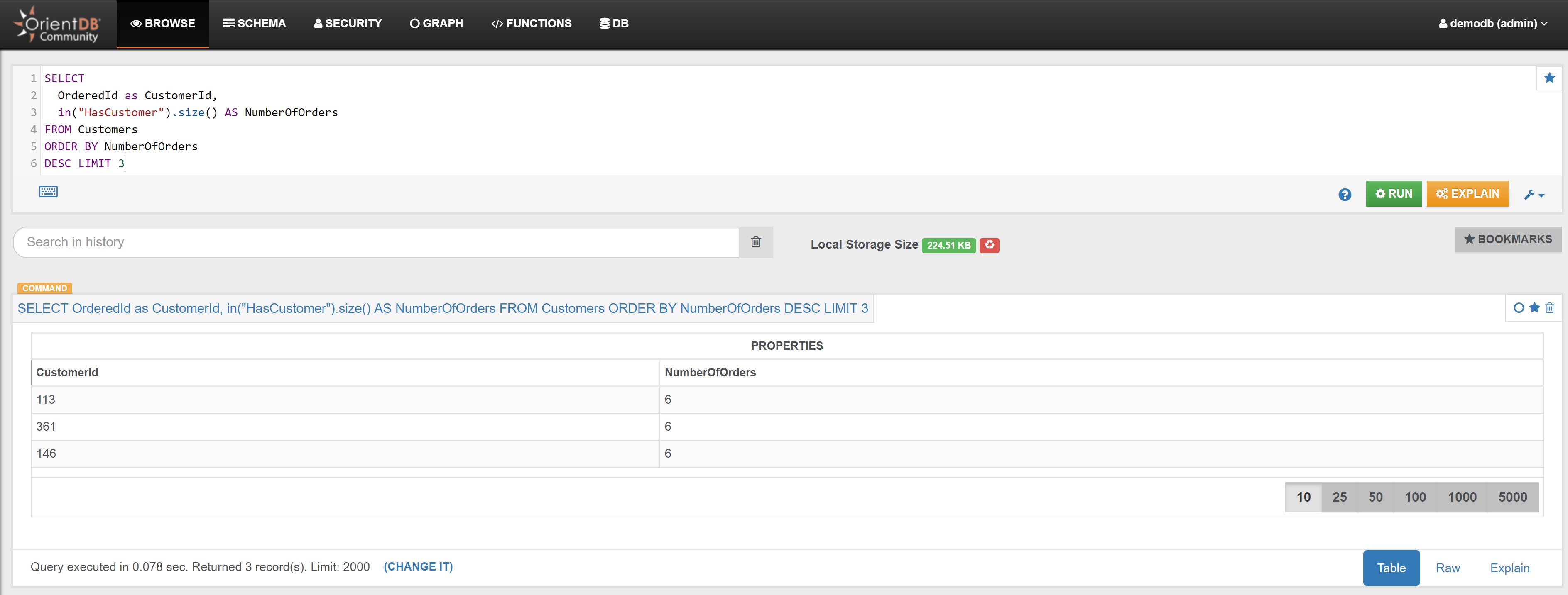
Example 4
Find the top 3 Customers in terms of spending:
SELECT
customer.OrderedId as customerOrderedId,
SUM(order.Amount) as totalAmount
FROM (
MATCH {Class: Customers, as: customer}<-HasCustomer-{class: Orders, as: order}
RETURN customer, order
)
GROUP BY customerOrderedId
ORDER BY totalAmount DESC
LIMIT 3
In the Browse Tab of Studio, using the query above, this is the visualized result:
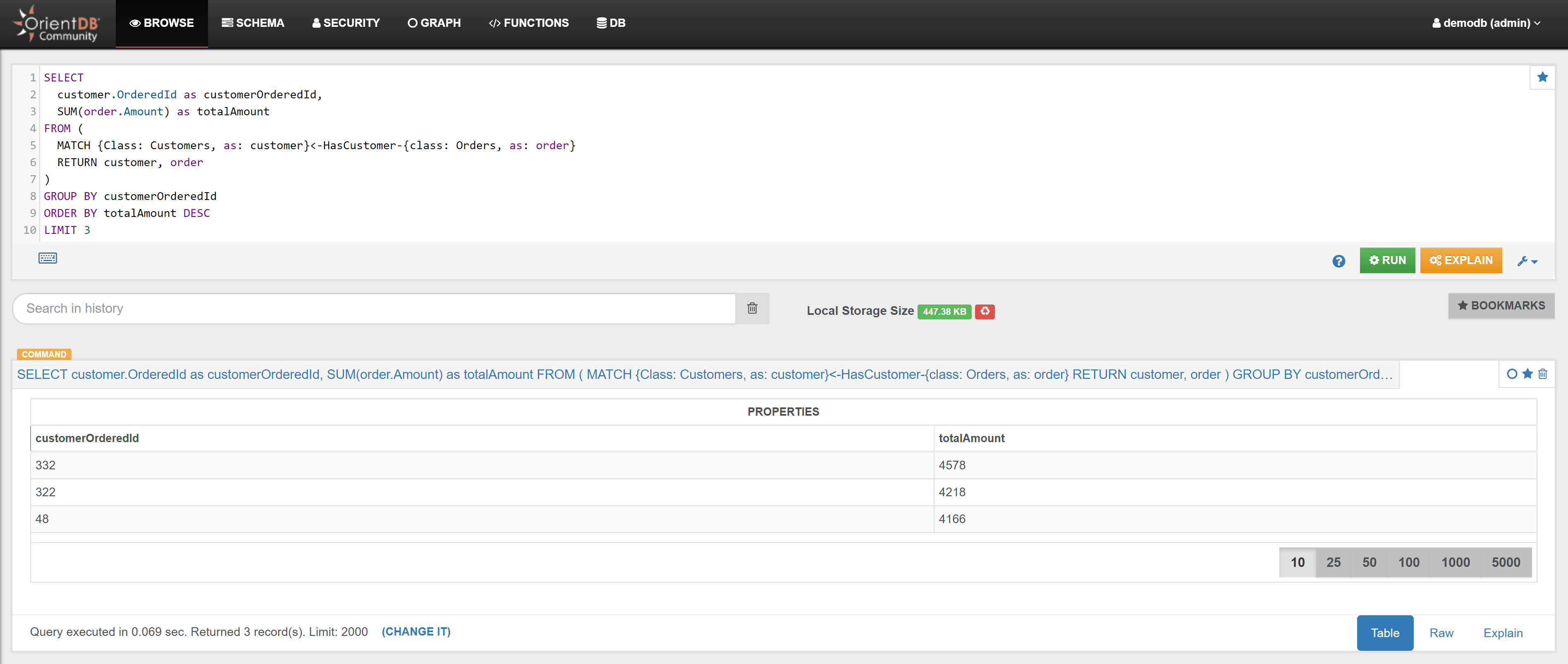
Example 5
Find all Orders placed by Customer with Id 2:
MATCH {class: Customers, as: c, where: (OrderedId=1)}<-HasCustomer-{class: Orders, as: o}
RETURN $pathelements
In the Graph Editor included in Studio, using 'RETURN $pathelements' as RETURN clause, this is the obtained graph:

Example 6
Calculate the total revenues from Orders associated with Customer with Id 2:
SELECT sum(Amount) as TotalAmount
FROM (
SELECT expand(in('HasCustomer'))
FROM Customers
WHERE OrderedId=2
)
In the Browse Tab of Studio, using the query above, this is the obtained list of records:
